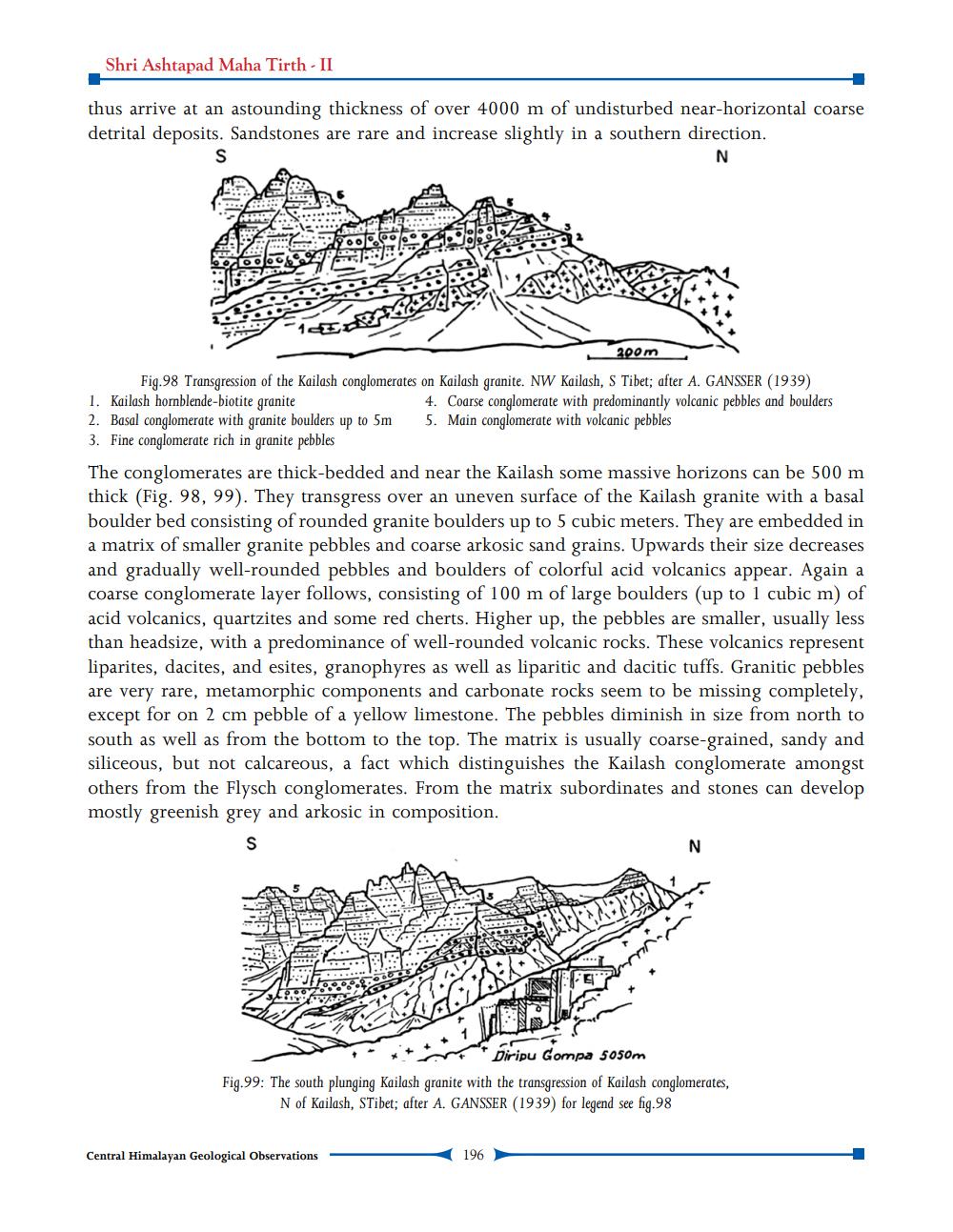________________
Shri Ashtapad Maha Tirth - II
thus arrive at an astounding thickness of over 4000 m of undisturbed near-horizontal coarse detrital deposits. Sandstones are rare and increase slightly in a southern direction.
-100
200 m Fig.98 Transgression of the Kailash conglomerates on Kailash granite. NW Kailash, S Tibet: after A. GANSSER (1939) 1. Kailash hornblende-biotite granite
4. Coarse conglomerate with predominantly volcanic pebbles and boulders 2. Basal conglomerate with granite boulders up to 5m 5. Main conglomerate with volcanic pebbles 3. Fine conglomerate rich in granite pebbles
The conglomerates are thick-bedded and near the Kailash some massive horizons can be 500 m thick (Fig. 98, 99). They transgress over an uneven surface of the Kailash granite with a basal boulder bed consisting of rounded granite boulders up to 5 cubic meters. They are embedded in a matrix of smaller granite pebbles and coarse arkosic sand grains. Upwards their size decreases and gradually well-rounded pebbles and boulders of colorful acid volcanics appear. Again a coarse conglomerate layer follows, consisting of 100 m of large boulders (up to 1 cubic m) of acid volcanics, quartzites and some red cherts. Higher up, the pebbles are smaller, usually less than headsize, with a predominance of well-rounded volcanic rocks. These volcanics represent liparites, dacites, and esites, granophyres as well as liparitic and dacitic tuffs. Granitic pebbles are very rare, metamorphic components and carbonate rocks seem to be missing completely, except for on 2 cm pebble of a yellow limestone. The pebbles diminish in size from north to south as well as from the bottom to the top. The matrix is usually coarse-grained, sandy and siliceous, but not calcareous, a fact which distinguishes the Kailash conglomerate amongst others from the Flysch conglomerates. From the matrix subordinates and stones can develop mostly greenish grey and arkosic in composition.
1
* Diripu Gompa 5050m Fig.99: The south plunging Kailash granite with the transgression of Kailash conglomerates,
N of Kailash, STibet; after A. GANSSER (1939) for legend see fig.98
Central Himalayan Geological Observations
(196




